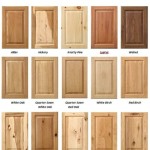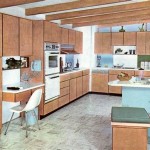Antique Kitchen Hutch With Flour Bin: A Functional and Aesthetic Treasure
The antique kitchen hutch, particularly those featuring a built-in flour bin, represents a significant piece of domestic history. More than mere storage, these hutches embody the transition from laborious food preparation to a more organized and efficient domestic space. They speak to a time when kitchens were the heart of the home, and the hutch served as a central command station for baking and preserving.
These hutches, prevalent from the late 19th century through the early to mid-20th century, were designed with functionality and beauty in mind. Crafted from various types of wood, including oak, pine, and maple, each hutch possesses a distinct character shaped by its construction, hardware, and provenance. The incorporation of a flour bin distinguishes it from other types of cabinets, providing a testament to the importance of home baking in past eras.
The presence of a flour bin within the hutch is a crucial element that elevates its historical significance and practical value. The flour bin was strategically integrated to ensure that ingredients were conveniently accessible during baking. These bins, typically constructed of wood or metal-lined for preservation, were designed to hold substantial quantities of flour, enabling cooks to prepare bread, pastries, and other culinary staples without repeated trips to the pantry.
Beyond its functional capacity, the antique kitchen hutch with a flour bin provides a glimpse into a different era of domestic life. It reflects a time when families were more reliant on home-cooked meals and baking was a daily or weekly ritual. The hutch’s design, materials, and craftsmanship tell a narrative of resourcefulness, practicality, and the integration of utility and aesthetics in the home.
Key Features and Construction
Antique kitchen hutches featuring flour bins exhibit distinctive construction and features. These attributes are useful for identifying, assessing, and appreciating these valuable pieces of furniture. Understanding these aspects is key to distinguishing authentic antique examples from later reproductions or adaptations.
The most significant feature is, of course, the flour bin itself. Typically located in the lower portion of the hutch, the bin usually features a hinged lid or pull-out drawer for access. The interior of the bin is often lined with tin or another metal to prevent moisture and pests from spoiling the flour. The size of the bin often corresponds to the overall size of the hutch, indicating its intended capacity for household baking needs.
The upper portion of the hutch usually comprises shelves, often enclosed by glass or wooden doors. These shelves were designed to display and store dishes, glassware, and other kitchen essentials. The arrangement of the shelves and their accessibility were carefully considered to optimize storage and functionality. Some hutches feature plate rails or built-in spice racks for added convenience.
The materials used in the construction of these hutches vary. Oak was a particularly popular choice, lending durability and showcasing a prominent grain pattern. Pine was another common material, especially for more rustic or country-style hutches. Maple, with its smooth surface and strength, was also favored, particularly for pieces that were intended to be painted or varnished. The choice of wood influenced the overall appearance and the perceived value of the hutch.
Hardware is another significant element that contributes to the character and historical accuracy of the hutch. Original hardware, such as hinges, pulls, and latches, can provide clues to the age and style of the piece. These hardware components were often crafted from brass, iron, or other metals. The design of the hardware can range from simple and functional to ornate and decorative, reflecting the overall aesthetic of the hutch.
Evaluating Authenticity and Condition
When acquiring an antique kitchen hutch with a flour bin, it is critical to diligently assess its authenticity and condition. Properly evaluating these aspects ensures that the piece is genuine and that any necessary restoration is appropriately addressed. A thorough examination can also impact its overall value.
Begin by examining the construction techniques. Authentic antique hutches often exhibit construction methods that are no longer commonly used in modern furniture manufacturing. These methods can include dovetail joints, mortise-and-tenon joints, and hand-cut joinery. These construction features indicate a higher level of craftsmanship and are indicative of older, genuine pieces.
Examine the finish of the hutch. Original finishes often exhibit signs of wear and age, such as crazing, fading, or minor imperfections. While refinishing can improve the appearance of the hutch, it can also diminish its historical value if not done carefully. Ideally, preserve as much of the original finish as possible, only addressing areas that are severely damaged or unstable. Always inquire about the history of any restoration work that has been performed.
Inspect the hardware closely. Original hardware often exhibits signs of wear and age, such as patina, rust, or slight imperfections. Replacing original hardware with modern reproductions can detract from the authenticity and value of the hutch. Attempt to retain original hardware whenever possible.
Pay particular attention to the condition of the flour bin. Ensure that the lining is intact and free from significant rust or damage. Examine the lid or drawer mechanism to ensure that it operates smoothly. Any damage to the flour bin can affect the functionality and value of the hutch.
Look for any signs of repairs or alterations. In many cases, antique hutches will have undergone repairs over the years. Evaluate the quality of these repairs and determine whether they are consistent with the age and style of the piece. Be wary of alterations that significantly alter the original design or functionality of the hutch.
Restoration and Preservation
Restoring and preserving an antique kitchen hutch with a flour bin requires a careful and informed approach. The goal is to maintain the historical integrity of the piece while addressing any structural or cosmetic issues. Proper restoration techniques ensure that the hutch can be enjoyed for generations to come.
Begin by thoroughly cleaning the hutch. Use gentle cleaning agents and soft cloths to remove dirt, dust, and grime. Avoid using harsh chemicals or abrasive cleaners, as these can damage the original finish. If the finish is particularly delicate, consult with a professional conservator for guidance on appropriate cleaning methods.
Address any structural repairs that are necessary. This may involve repairing loose joints, replacing damaged wood, or reinforcing weak areas. Use appropriate adhesives and fasteners to ensure that the repairs are strong and durable. Whenever possible, use materials that are consistent with the original construction of the hutch.
Consider the finish carefully. If the original finish is in good condition, preserve it by applying a protective coating of wax or polish. If the finish is severely damaged or deteriorated, refinishing may be necessary. However, be aware that refinishing can diminish the historical value of the hutch if not done properly. Consult with a professional furniture refinisher to determine the best course of action.
Pay special attention to the flour bin. Clean the interior of the bin and repair any damage to the lining. If the lining is severely rusted or damaged, consider replacing it with a new lining that is consistent with the original design. Ensure that the lid or drawer mechanism operates smoothly and that the bin is properly sealed to prevent moisture and pests from entering.
Finally, protect the hutch from future damage. Place it in a location that is away from direct sunlight and extreme temperatures. Use coasters and placemats to protect the surface from scratches and spills. Dust the hutch regularly to prevent the buildup of dirt and grime. With proper care and maintenance, an antique kitchen hutch with a flour bin can remain a beautiful and functional part of the home for many years.
In conclusion, the antique kitchen hutch with a flour bin represents more than just a piece of furniture; it is a tangible connection to the past. Its history, design, and craftsmanship offer valuable insights into domestic life during a different era. By understanding its features, evaluating its authenticity, and employing proper restoration techniques, present-day owners can ensure their continued appreciation and preservation.

Antique Flour Cabinet

Hoosier Excellence Cabinets Browsing The Atlas

Antique Kitchen Cabinet With Tilt Out Flour Bin

Hoosier Style Cabinet Original Flour Bin With Sifter
My Hoosier Cabinet The T Cozy

Antique Hoosier Hutch With Flour Sifter 1931

7 Flour Hutch Ideas

Antique Oak Wilson Kitchen Cabinet Stepback Cupboard Hoosier Flour Bin Primitive

Antique Hoosier Cabinet With Flour Sifter

Hoosier Excellence Cabinets Browsing The Atlas
Related Posts








